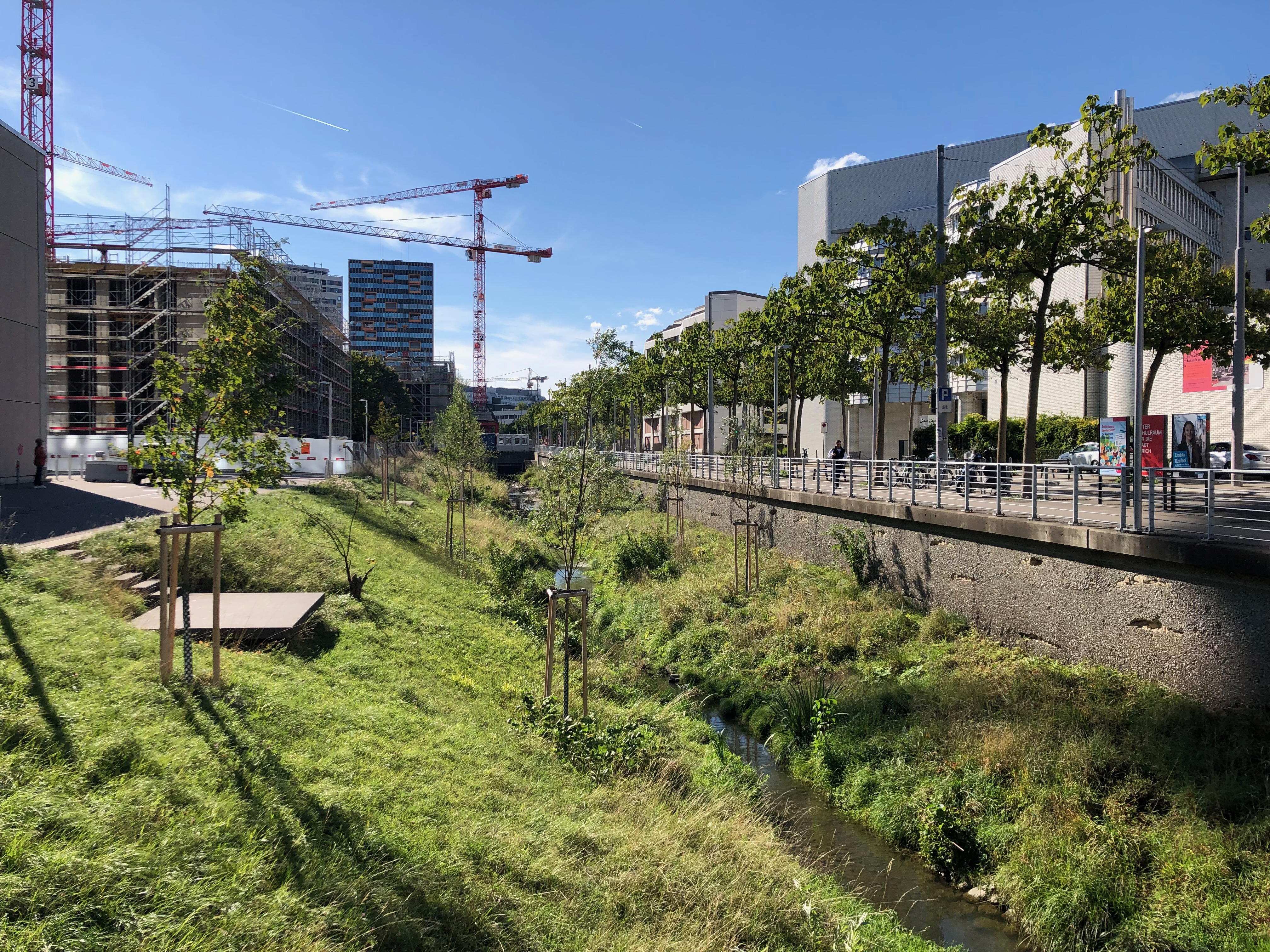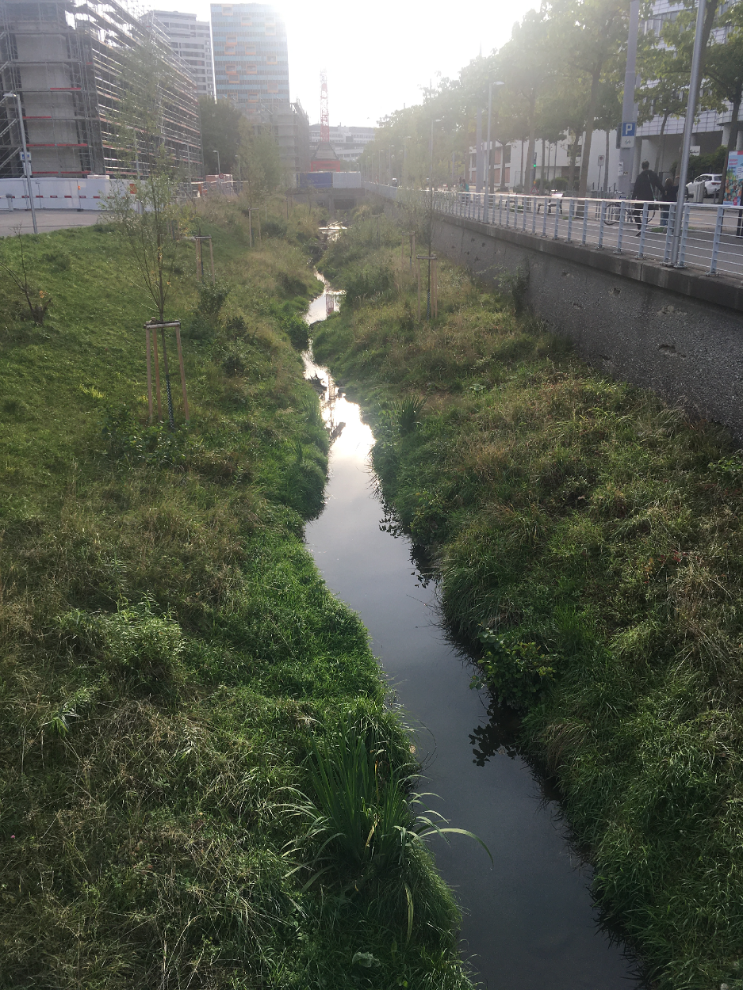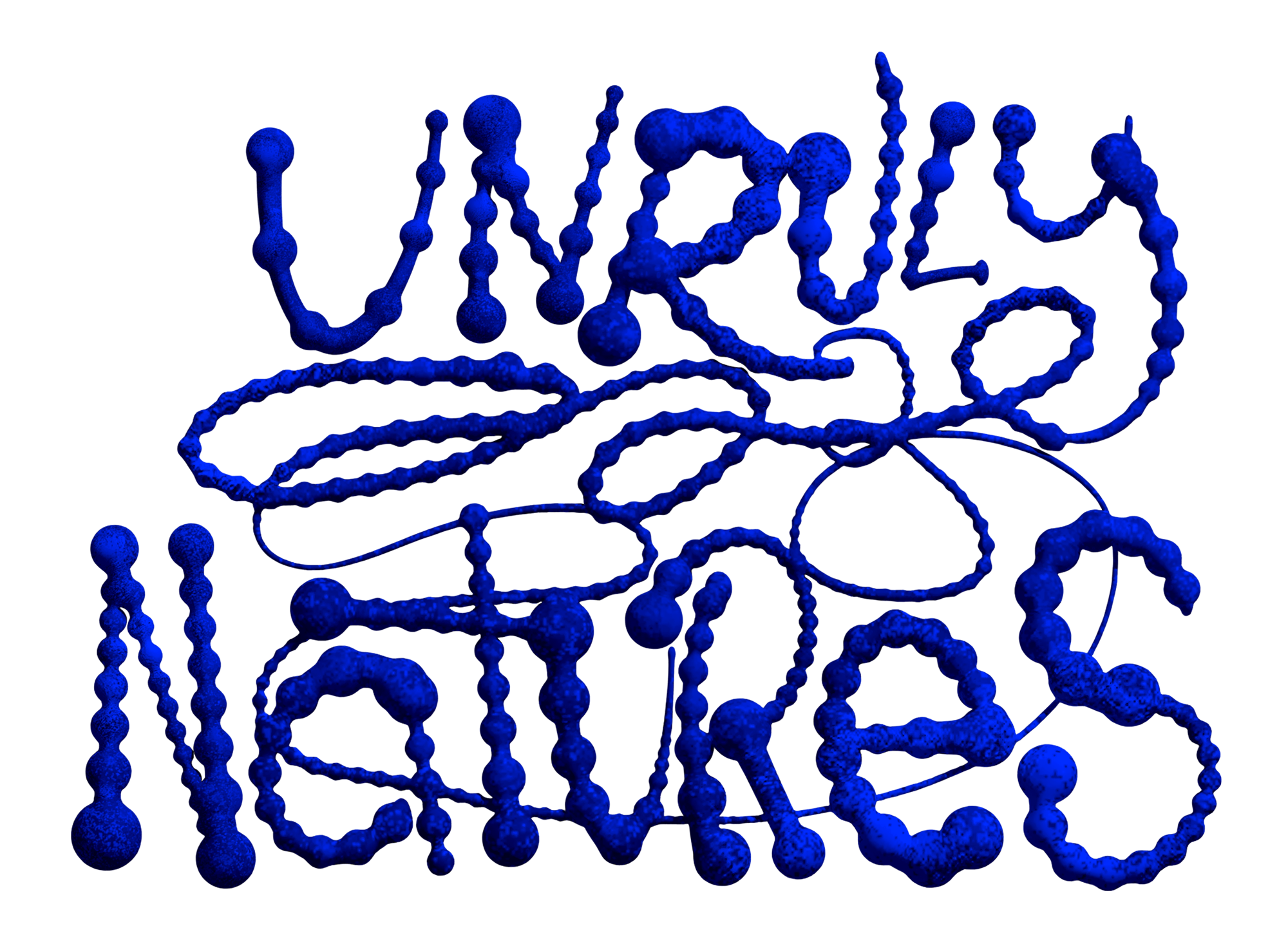︎
Field Notes September 23th 2022
Written by Dario Gentili
Photographs by: Dario Gentili, Flurina Gradin
Becoming Wild:
Processes of Renaturalization
︎
 View on Leutschenbach in Zurich Oerlikon.
View on Leutschenbach in Zurich Oerlikon.In Calabria, the poor state of the river Crati, which runs through Cosenza Vecchia, often recurs among the arguments used to denounce the degradation of the city. For years now, the river has been in a state of neglect, which has led to its wild condition. As a result of the indecisiveness of successive municipal administrations, the riverfront is now inaccessible for long stretches and is often featured in the news, reinforcing the perception of this place as something outside of civilization: wild.
Like real or imaginary forests, the Crati awakens a sense of danger and insecurity among citizens. Yet, when I had the chance to observe it from the bridges and embankments of Cosenza Vecchia, the river conveyed to me something sublime, perhaps because of its inaccessibility and remoteness from the traditional idea of urban decorum. I visited Cosenza Vecchia in 2021, on the occasion of a Summer School entitled "Inhabiting the uninhabitable". I was told at the time that in Zurich, state-of-the-art environmental engineers had made the river Sihl as wild as the Crati in Cosenza, where wilderness is instead a problem to be solved.
The river Crati and its forest immediately came to my memory when, during the Hybrid Ecologies 2022 field trip, I found myself in front of the renaturalized Sihl, just a short walk from the Zurich Central Station. At first glance, when looking at this river, the situation does not appear different from the Crati: patches of spontaneous vegetation haphazardly line the course of the river; embankments covered with vegetation make the watercourse uneven; logs and pieces of wood appear here and there; various species of birds find their habitat. Well, when one looks around, what becomes visible is the city of Zurich, with its regular outline of historic buildings and the perfectly preserved Altstadt, and not Cosenza Vecchia, with the noticeable decay of its beautiful architecture. In short, the urban context of Zurich's city center does not encourage the perception of danger and fear produced instead by the river Crati.
In both instances, the impression is that the river constitutes an autonomous environment that does not require the presence of humans - this section of the Sihl is actually inaccessible to citizens. The reality is that the state of the Sihl results from a process of renaturalization; instead, the Crati has become wild. Whereas becoming wild presupposes the spontaneous action of nature, which is often facilitated by the neglect of humans, renaturalization is a human intervention that reactivates the action of nature.
This action must be controlled and meet safety criteria to limit its spontaneity, which could cause insecurity in the city. The renaturalization of the Sihl is a work of environmental engineering: the tree trunk lying in the middle of the river course, which the power of the currents could drag away causing damage, is firmly fastened to the ground with invisible metal bolts.
Kant distinguishes the notion of the sublime, which includes a sense of danger and vulnerability, from artificial beauty. In the case of the renaturalized Sihl, we are experiencing a romanticism of nature reduced to the beautiful, a romanticism to be enjoyed safely.
 Renaturalization of the Sihl river. Image: Samuel Schalch
Renaturalization of the Sihl river. Image: Samuel Schalch
Renaturalization and
wilderness share an aesthetics of the natural environment that does not comprise
human presence. What distinguishes the two is the urban context that
constitutes their backdrop. I wonder how much influence an actual, presumed, or
induced condition of social degradation and "wilderness" has on the
perception of insecurity and danger that characterizes certain urban woodlands and
abandoned spaces, which uncultivated nature is reappropriating. I found it
interesting that, passing through a more peripheral area of Zurich, the
renaturalization of the Leutschenbach canal is accompanied by an urban context characterized
by various interventions encouraging socialization, such as constructing a park and some squares.

It appears as if a renaturalized environment could be sustained exclusively by a socially upgraded urban environment. These urban interventions that combine renaturalization with socialization reveal a deep fear of the wilderness.
The city administration must safeguard the natural environment, and avoid its autonomy, to prevent a negative impact on the perception of the social environment. Wilderness must be tamed and neutralized, and socialization must be secured, firmly fastened as the tree trunk of the river Sihl.
We can presume that wilderness represents an unsustainable risk to the human, to society, and to the urban – to the very coexistence of the human and the natural that renaturalization is trying to achieve. Wilderness threatens the boundary between the urban and the wild, between society and nature; the boundary erected as its inaugural gesture by Western civilization, which has taken different configurations throughout history and that we are challenging today.
